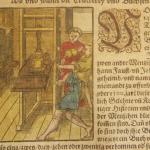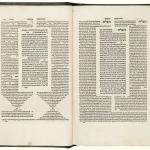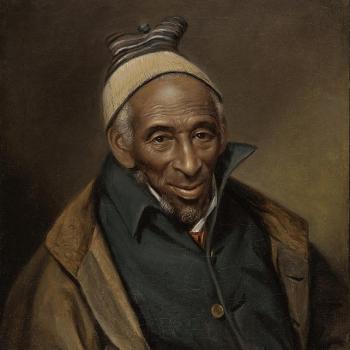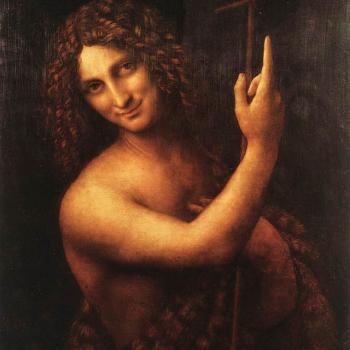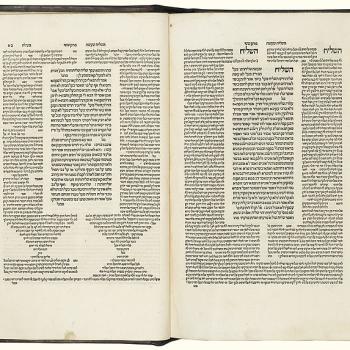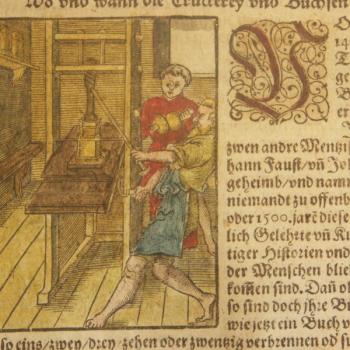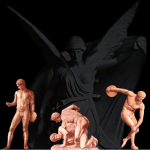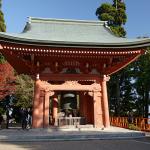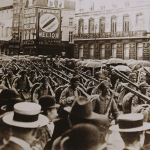This is the third column in a series that explores how the invention of printing has impacted religion. Part One is about the beginnings of printing technology in China and how this supported the spread of Buddhism. Part Two shows how the introduction of the printing press to Europe made the Reformation possible and changed the way European Christians relate to the Bible. This column will look at the history of printing the Quran.
The Quran (also spelled Koran or Qu’ran), is, of course, the holiest book of Islam. In Islam, the Quran is the word of God that was revealed to the Prophet Muhammad (570-632 CE). The revelations were written down by several of the Prophet’s companions, who compiled the work after his death. The Caliph Uthman ibn Affan (ca. 573-656), also one of the Prophet’s companions, is credited with finalizing what would be the standard version of the Quran ever after.
As with other of the world’s great scriptures, for a long time the only way to reproduce the Quran was hand copying. The calligraphers who made copies of the Quran were highly skilled artisans who took care that their work was not only accurate, but also beautiful.
Early Print Technology and the Quran
Qurans were printed by use of wood blocks carved in relief, as the Diamond Sutra was printed in 868, as early as the 10th century. This process wasn’t thought to do justice to the beauty of Arabic script, however. And the movable type revolution was slow to impact the Muslim world. Movable type, so useful for typesetting in the Latin alphabet, simply was less adaptable to the flowing curves and many diacritical marks of Arabic.
In 1485 Sultan Bayezid II of the Ottoman Empire decreed that no Muslim book, especially the Quran, would be set in type and printed. He trusted only master calligraphers with Arabic, not any yahoo with a printing press. And the Ottoman Turkish script of the time was based on Arabic script, and that wasn’t trusted to printers, either. A long line of the Sultan’s successors kept the ban in place. (The ban did not apply to the dhimmi, Christians and Jews living in the Empire. In the 16th century, a large Jewish community in Constantinople became prolific publishers of Hebrew books. That’s a story for another column, however.)
The Ottoman Empire reached deeply into southeast Europe and was an important trading partner with Italy. In the 16th century an Italian printer named Paganino Paganini may have decided that the ban on Arabic printing in the Empire opened up a marketing opportunity. Paganini produced what is believed to be the first Quran printed by movable type, in Arabic, in 1538. We know this because a copy of Paganini’s long-forgotten Quran was found in a monastery in Venice in 1987. However, scholars who have studied the Paganini Quran found many errors. It’s suspected the rest of the copies may have been destroyed by the Ottomans. Sultan Bayezid II may have been right not to trust any yahoo with a printing press with the Quran.
Advances in Printing Technology
By the 17th century movable type technology had improved enough to do a more credible job with Arabic, and a couple of Qurans were published for European scholars. One edition was produced in Hamburg in 1694 and another, with a Latin translation, in Rome in 1698.
The first Quran known to have been typeset and printed under the supervision of Muslim scholars was published in St. Petersburg, Russia, in 1787. And this was done with the encouragement of Tsarina Catherine II, better known as Catherine the Great, as a gesture of religious tolerance. Relations between the government of Russia and its Muslim citizens prior to Catherine were, shall we say, messy and unharmonious. Catherine saw the benefit of building support for her reign within Muslim communities. Publishing a Quran in Russia was part of that effort.
Typesetting technology continued to improve, and by the end of the 18th century a few more editions of the Quran had been published. A few of these were acceptable even to calligraphers. The 19th century saw the end of movable type (although I doubt it ever completely went away). It was replaced by “hot type” machines, such as the widely used Linotype that cast entire lines of type in lead. In the 20th century hot type gave way to cold type, or the offset process that eliminated the need for raised metal type entirely. Offset printing made it possible to print hand-drawn and decorated (in color!) Arabic on a large scale. The technical problems of typesetting and printing beautiful Qurans have been resolved.



